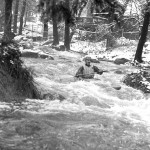A new dispatch system for emergency medical calls is on the horizon in Riverside County. At a workshop last week, the Board of Supervisors listened to staff and the public discuss changes needed to implement the new system.
“We are interested in becoming the system that’s the model,” said County Emergency Services Director Bruce Barton. “We want the optimal outcome for our patients.”
To achieve the new service and implement it, the county will have to create a new cadre of dispatchers. They will need to understand medical emergencies and determine triage priorities from phone conversations. Barton emphasized that Riverside County would not be on the cutting edge of implementing a new and untried process. Many localities throughout the state and country have moved in this direction over past two decades.
“We’re looking for ways to improve the service, reduce costs and create more flexibility, and be more agile,” said Board Chair Bob Buster (Supervisor 1st District).
Currently, Riverside County emergency medical responses average about 160,000 incidents annually, according to Barton. Only 400 of these are heart attacks. The question he posed to the board to reflect on as they consider these changes was, “Should the system respond to 75 percent of our calls as though they are all cardiac patients?”
Buster and Barton discussed the potential changes that the new EMD would bring about. For example, the county currently collects data on how quickly the ambulance services transport patients, such as stroke victims to the hospital. The new system would actually track the total time from when the victim makes the 9-1-1 call until they can be discharged from the hospital. This would include sub-component times such as how long until the ambulance arrived as well as the length of time for the actual transport.
“We’ll redesign patient treatment,” Barton said. “All the protocols, from the ground up, will be evidence based.” A standard set of questions will be asked 9-1-1 callers. The nature of the dispatch will depend upon the responses callers give and that will help define the type of initial medical response.
County Fire Chief John Hawkins told the board that he expects the computer-to-computer exchange of information to be implemented before the new year.
“Our goal is to have the new EMD dispatch system active in March 2012,” Hawkins told the supervisors. “This is important to do. The Fire Department believes the system is critical.”
Idyllwild Fire Chief Norm Walker also said it was a good idea, however he plans to discuss its implementation with the Emergency Control Center. “Because it’s a system built on cities where access is easier, I’m worried about the effect of weather and access for calls up here. Sometimes in the worst weather, we need to go back to station to get a plow to get in,” Walker said.










